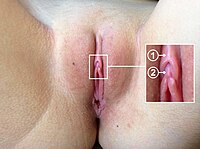
RGFP966 is protective against lipopolysaccharide-induced depressive-like behaviors in mice by inhibiting neuroinflammation and microglial activation.
Sign Up to like & getrecommendations! Published in 2021 at "International immunopharmacology"
DOI: 10.1016/j.intimp.2021.108259
Abstract: Depression is a prevalent mental disorder. However, its pathophysiological mechanism has still remained elusive, and a limited number of effective treatments have been presented. Recent studies have shown that neuroinflammation and microglial activation are involved… read more here.
Keywords: induced depressive; rgfp966; behaviors mice; like behaviors ... See more keywords

Intracerebellar microinjection of histaminergic compounds on locomotor and exploratory behaviors in mice
Sign Up to like & getrecommendations! Published in 2018 at "Neuroscience Letters"
DOI: 10.1016/j.neulet.2018.09.022
Abstract: The neural histaminergic system innervates the cerebellum, with a high density of fibers in the vermis and flocculus. The cerebellum participates in motor functions, but the role of the histaminergic system in this function is… read more here.
Keywords: vuf 8430; exploratory behaviors; behaviors mice; histaminergic ... See more keywords

Valproate reverses mania-like behaviors in mice via preferential targeting of HDAC2
Sign Up to like & getrecommendations! Published in 2020 at "Molecular Psychiatry"
DOI: 10.1038/s41380-020-00958-2
Abstract: Valproate (VPA) has been used in the treatment of bipolar disorder since the 1990s. However, the therapeutic targets of VPA have remained elusive. Here we employ a preclinical model to identify the therapeutic targets of… read more here.
Keywords: reverses mania; mania like; valproate reverses; valproate ... See more keywords

Direct and transgenerational effects of low doses of perinatal di-(2-ethylhexyl) phthalate (DEHP) on social behaviors in mice
Sign Up to like & getrecommendations! Published in 2017 at "PLoS ONE"
DOI: 10.1371/journal.pone.0171977
Abstract: Di-(2-ethylhexyl) phthalate (DEHP) is an endocrine disrupting chemical commonly used as a plasticizer in medical equipment, food packaging, flooring, and children’s toys. DEHP exposure during early development has been associated with adverse neurobehavioral outcomes in… read more here.
Keywords: dehp; phthalate dehp; dehp doses; behaviors mice ... See more keywords

Methamphetamine Disturbs Gut Homeostasis and Reshapes Serum Metabolome, Inducing Neurotoxicity and Abnormal Behaviors in Mice
Sign Up to like & getrecommendations! Published in 2022 at "Frontiers in Microbiology"
DOI: 10.3389/fmicb.2022.755189
Abstract: As an illicit psychostimulant, repeated methamphetamine (MA) exposure results in addiction and causes severe neurotoxicity. Studies have revealed complex interactions among gut homeostasis, metabolism, and the central nervous system (CNS). To investigate the disturbance of… read more here.
Keywords: gut homeostasis; behaviors mice; neurotoxicity; serum metabolome ... See more keywords

Ultrasound Stimulation of Prefrontal Cortex Improves Lipopolysaccharide-Induced Depressive-Like Behaviors in Mice
Sign Up to like & getrecommendations! Published in 2022 at "Frontiers in Psychiatry"
DOI: 10.3389/fpsyt.2022.864481
Abstract: Increasing evidence indicates that inflammatory responses may influence brain neurochemical pathways, inducing depressive-like behaviors. Ultrasound stimulation (US) is a promising non-invasive treatment for neuropsychiatric diseases. We investigated whether US can suppress inflammation and improve depressive-like… read more here.
Keywords: like behaviors; ultrasound stimulation; behaviors mice; depressive like ... See more keywords